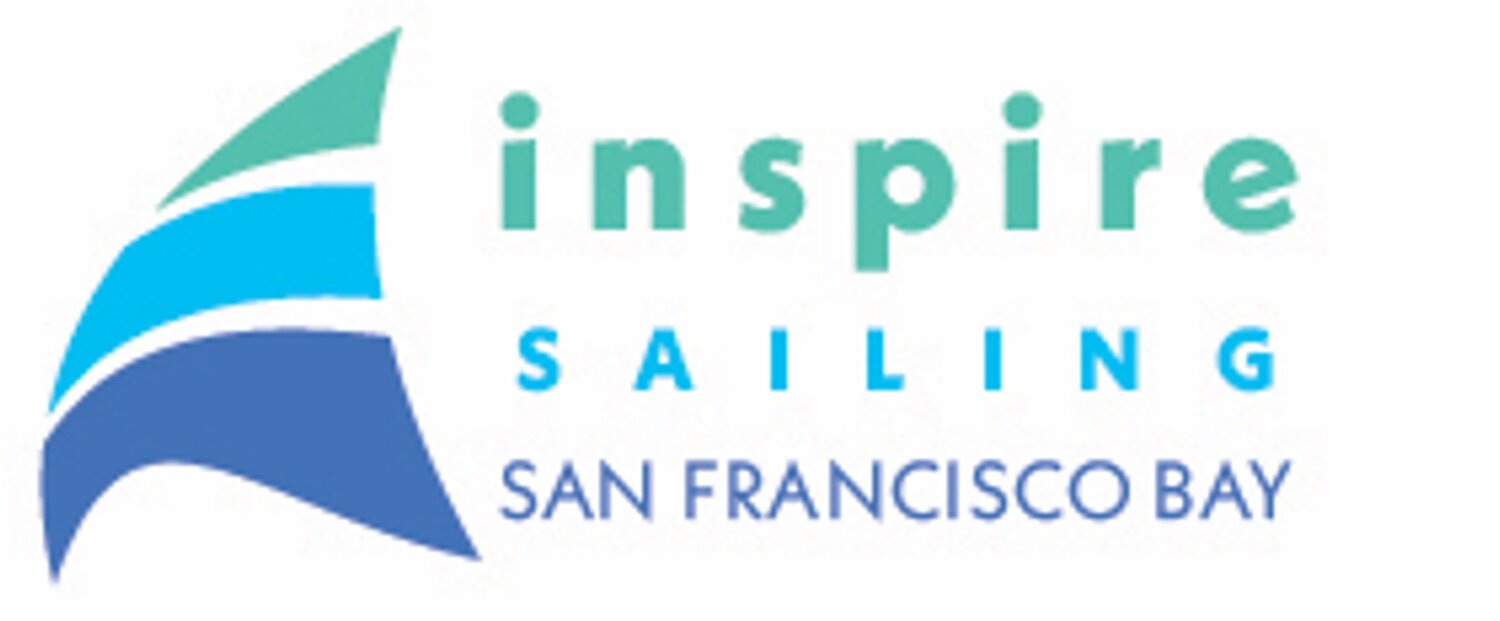What to Expect…
…And what to bring, how to prepare, etc.
On this page, we list the things you should do before your course or clinic and what to bring on the day of your course or clinic. The better prepared and equipped you are, the more comfortable and successful you will be.
In General
COURSE MATERIALS: In most cases, your course or clinic will come with a U.S. Sailing textbook or an Inspire Sailing student manual, or both. These are important study materials and should be reviewed before your time on the water. We find that students who study these materials ahead of time have an easier time on the water, putting the theory, terminology, and techniques into practice.
FOOD: At Inspire Sailing, courses generally run from 9:00am or 10:00am until 4:00pm or 5:00pm. We’ll take a lunch break, usually back onshore in the Clubroom. Please bring a “sack lunch” for each day of your course. Your instructor will let you know if on any given day it should be boat-appropriate (i.e., no microwave). Otherwise, you’re welcome to use the microwave and refrigerator in the Clubroom.
CLOTHING: Inspire Sailing has foul weather gear (FWG) available for free for students, and for rent for charterers. If you’re sailing on a J24, you will want water-resistant or water-proof pants and jacket. On the bigger boats, a water-resistant jacket should be enough. As typical with any other outdoor activity, dressing in layers will give you the best comfort, protection, and options. Don’t forget your hat and sunglasses (both with leashes or straps) and sunscreen!
FOOTWEAR AND GLOVES: Non-marking shoes are preferred; open-toed shoes are not safe and therefore not allowed. Sailing gloves are also recommended.
PERSONAL FLOTATION DEVICE (PFD): Inspire Sailing requires that all students, charterers, guests, and instructors wear PFDs at all times. Inspire Sailing has PFDs available for free for students, and for rent for charterers. Either non-inflatable or inflatable is ok.
OTHER GEAR: As you develop into a skipper, you’ll want to create a “sail bag” to bring with you every time you sail. You’ll want to include things like a handheld VHF radio, a multi-tool (e.g., Leatherman), a sailing knife, paper navigation charts, plotting tools (parallel ruler and dividers), tide/current booklet, whistle, hand-bearing compass, headlamp, binoculars, and some simple repair/first aid items. We’ll do a deep-dive on sail bag gear in another post.
AFTER THE COURSE OR CLINIC: Sailing is difficult. And the San Francisco Bay offers some of the most challenging sailing conditions in the world, with high wind, strong currents, busy traffic, shallow depths, and thick fog. In some cases, these conditions make it difficult for students to successfully pass their on-the-water evaluation and certification within the timeframe of the course. Should that happen, we offer follow-up “Development Sails” for students so that they can practice specific elements of the U.S. Sailing certification standards, or just practice in general with an instructor and fellow students.
Basic Keelboat Students
Since you are just starting your sailing career, you may not want to invest in a lot of gear up front. You’re welcome to use our loaner foul weather gear and PFDs. You should still bring plenty of layers and a lunch. Note: a good Gore-tex jacket from REI or elsewhere does just fine in protecting from the elements. And we’ve had plenty of students show up in ski pants for the bottom layer. Just please leave the ski BOOTS at home. Tennis shoes are fine for now. No open toed shoes please.
Basic Cruising Students
As you are developing into a skipper, you may want to begin investing in some of your own gear… even though our FWG and PFDs are still available to you for free as a student. A good set of FWG, a comfortable PFD, and proper boat shoes or boots would be a good start.
Bareboat Cruising Students
As you develop from sport boat skipper to Silver/Gold/Platinum Fleet skipper, you responsibilities expand as do the situations you may encounter. You’ll want to really start building your “sail bag” contents if you haven’t done so already. See the “Other Gear” paragraph above. We’ll post deeper-dive content on our gear recommendations in the future.
Final Thoughts
Despite its seemingly peaceful nature, sailing can be strenuous and the boat’s motion can make people feel anxious (and yes, even seasick). Be sure to drink plenty of water before, during, and after your sail. If you feel woozy, ill, cold, or uncomfortable, please let your instructor know immediately and we’ll take care of you.
If you have any questions about what to expect, what to bring, or how to prepare, please call our office at 510-831-1800 or email us at inquire@inspiresailing.com.
As you develop into a skipper, you’ll also want to build your go-to “sail bag.” You’ll want a good set of foul weather gear and boots, a Personal Flotation Device (PFD), a VHF radio, sailing gloves, and a multi-tool. You’ll also want some navigation tools like what is shown above: a paper chart, a Portland Plotter (or parallel rulers), a set of dividers, and pencil/eraser!
A VHF radio is now required for charters. Since the Sport Boats do not have on-board VHF radios, you’ll want to purchase a handheld VHF like the Uniden shown above if you’re going to charter Sport Boats. Alternatively, we’ll rent you a handheld VHF for $25/day. Boats in the Silver/Gold/Platinum fleet come equipped with VHF radios as part of the electronics (ship’s radio). We still recommend all skippers buy a handheld VHF as part of their standard sail bag contents.



